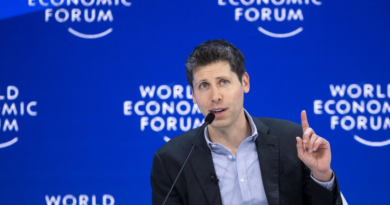Martha Sazon leads the Philippines-based finance superapp GCash with a majority-female 94 million user base
With a user base of more than 94 million—larger than the population of Germany—GCash is arguably the most popular Filipino finance app.
Launched in 2004, GCash began as an SMSbased money-transfer service catering to the Philippines’s large underbanked population. Users could deposit cash into their ewallets for a small transaction fee at convenience stores and pawnshops, and then use that e-cash to make purchases on their phones. GCash’s services have since grown and now include credit, remittance, and investments, and are used in 16 countries and territories.
GCash is owned by Mynt, a fintech startup launched in 2015 as a partnership between Globe, the Philippines’s largest telecommunications company, and Ant Group, an affiliate of Alibaba. Together, these firms’ stakes make up close to 70% of Mynt. Ayala Corp., a Philippines conglomerate that owns Globe, has a separate stake it recently increased to 13%. GCash is now valued at $5 billion after Japan’s largest lender, Mitsubishi UFJ Financial Group, acquired an 8% stake for $393 million in early August. Mynt also owns Fuse, a lending app.
Martha Sazon, ranked No. 38 on the Fortune Most Powerful Women Asia list this year, joined Mynt as president and CEO in June 2020. GCash’s popularity soared during the pandemic as Filipinos avoided handling cash. Well over half of GCash’s users are women, and almost all are lower-or middle-income.
How do your experiences at previous companies fit together at GCash?
Sazon: I was with Globe for around 13 years before I came to GCash, but before that I’ve been in different industries. I was in a local company, Del Monte Foods, and then went to GlaxoSmithKline. My background in FMCG [fast-moving consumer goods] and in telco have helped me a lot with my adjustment at GCash because at GCash we handle money, so any industry which involves money is relevant to GCash. The telco industry is also very complicated, so that helped me a lot in terms of the rigor of the business and how fast-moving it is. Fintech is much faster, though, and I think mainly because it’s a sunrise industry, a lot of new players are coming in, and regulations continue to evolve. The penetration of digitalization is increasing, therefore behaviors evolve, too.
About 57% of GCash’s user base are women, according to Globe’s data. What is GCash’s appeal for women?
Financial inclusion in and by itself talks about serving the underserved, and a lot of the underserved in the Philippines are those from the lower economic class, and a lot are women as well. But it’s not limited to gender; GCash is also for lower-income households and those outside Metro Manila. It’s no coincidence a big part of the organization is run by women, and they make up 40% of the leadership team.
How has this diversity helped GCash reach underserved populations?
We have a service called Gigs that’s a partnership with Raket.ph [an independent talent marketplace in the Philippines], which connects opportunities and job seekers in the gig economy. That was thought of by the younger employees here, because a person in my generation is used to the usual job employment. [Another example] is that women who used to be traditional homemakers are now able to earn even while at home through e-commerce. They can buy and sell through their own Lazada [e-commerce] stores or Facebook Marketplace, and accept and receive payments through GCash. So what used to be a physical trading activity can now be done even while taking care of the household.
One of our research findings also found that while men are usually the main earners of a household, it’s the women who manage the budget and try to make ends meet. So if they need to borrow money because the earnings of the husband are not enough, it’s the women who make that decision, and it’s also women who allocate the money to education, food, and electricity.
Has GCash helped Filipinos working overseas, too, especially with the rise of smartphones?
Yes, there’s now better control of funds. One of the pain points we’ve been hearing from overseas workers is that they try to save and send money back home only to find the money they sent has been wasted. Now, with GCash, they get back the control; they can pay the electric bills themselves, for example.
What advice do you have for women who aspire to be in leadership positions?
Know yourself, and know what you’re good at, and know what you need to work on. And then dream big. Don’t be limited by what you can wish for and what you can dream of, because everything starts with that. The reason I go around on interviews or for talks is because I want to become a role model for women. I’m trying to normalize women in leadership positions, so that the young ones, when they see me, or they see women like me, can go, “Oh, I want to be like her.” It’s a real thing for them, because normalizing helps people realize dreams.
This article appears in the October/November 2024 issue of Fortune with the headline “Unlocking mobile banking for Filipinos.”




